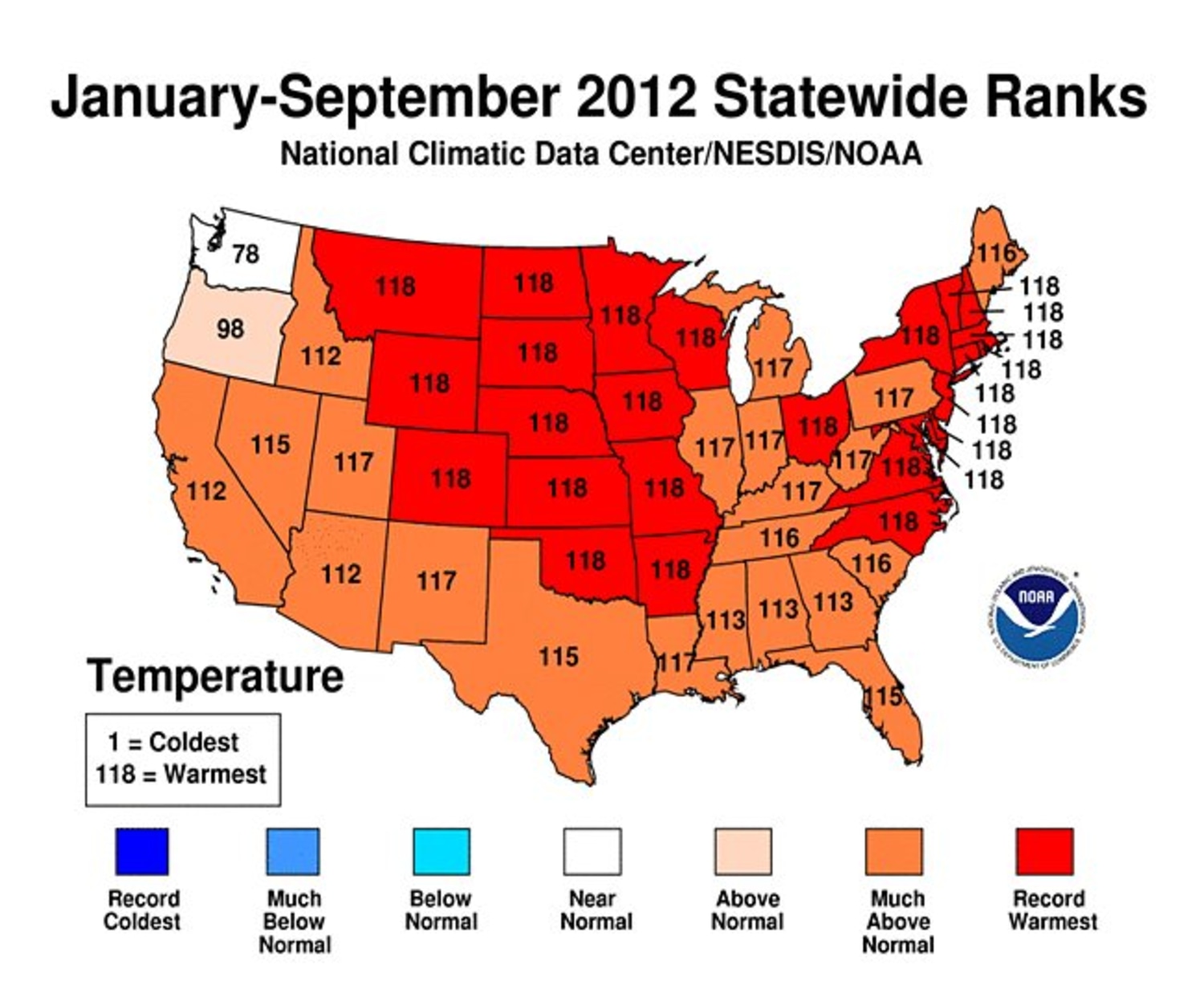America's Hottest States: Unveiling The Sizzling Truth
When you think about extreme heat in the United States, your mind might immediately conjure images of Death Valley, California, a place notorious for its scorching temperatures. With a record high of 134 degrees Fahrenheit (56.7 degrees Celsius), this California national park is indeed sweltering, setting a global benchmark for heat. However, it might surprise you to learn that despite this formidable record, California isn't even among the top 10 hottest states in the U.S. overall. This distinction between extreme localized records and consistent statewide average temperatures is crucial when asking: what is the hottest state in America?
The United States of America is a vast landmass, home to an incredible diversity of climates, from the frigid Alaskan tundra to the humid subtropics of the Deep South and the arid deserts of the Southwest. While intense summer heat is no stranger to any part of the country—all 50 states have recorded a high temperature of at least 100 degrees, with many well above 115 degrees Fahrenheit—the question of which state consistently experiences the highest heat throughout the year requires a deeper look beyond isolated heat spikes. If you're planning to move somewhere new, especially to escape the cold or embrace the warmth, understanding which states genuinely rank as the warmest is likely a big factor in your decision-making process. Let's embark on a journey to discover the truly sizzling states, based on comprehensive data and annual average temperatures.
Table of Contents
- Understanding "Hottest": More Than Just Record Highs
- The Reigning Champion: What is the Hottest State in the US?
- The Top 10 Hottest States in the U.S.
- Factors Contributing to Extreme Heat in the U.S.
- The Impact of Climate Change on U.S. Temperatures
- Living in the Heat: Considerations for Moving
- Navigating the Heat: Tips for Residents and Visitors
- The Future of Heat in America: What to Expect
Understanding "Hottest": More Than Just Record Highs
When people ask "what is the hottest state in America?", they often confuse peak temperatures with average annual warmth. It's easy to point to a specific, eye-watering record, but that doesn't tell the whole story of a state's climate. A state might have a single location that hits an extreme temperature once in a century, yet its overall climate remains relatively mild for the majority of the year. To accurately determine the hottest state, we must look at consistent, year-round data.The Myth of Death Valley and California's Heat
As mentioned, Death Valley holds the record for the highest temperature ever recorded on Earth. This fact often leads to the misconception that California must be the hottest state in the U.S. However, Death Valley is an anomaly—a unique geographical basin that traps heat, creating hyper-extreme conditions in a very localized area. The rest of California, while experiencing warm summers, particularly in its southern and central valleys, also boasts diverse climates ranging from cool coastal areas to snowy mountains. When you average out the temperatures across the entire state for all twelve months, California simply doesn't rank among the consistently warmest. This distinction is crucial for anyone truly trying to grasp what is the hottest state in America.Defining "Hottest": Annual Average vs. Summer Peaks
To truly identify the hottest states, we rely on the state's mean annual temperature. This metric is derived by averaging the twelve monthly average temperatures for each state. It provides a holistic view of the warmth experienced throughout the entire year, rather than just focusing on the scorching summer months. While all 50 states have recorded temperatures of at least 100 degrees Fahrenheit, and many well above 115 degrees, these are often peak summer highs. The states that consistently rank as the hottest are those where both summer heat is intense and winters are remarkably mild, if not virtually non-existent. The ten hottest states, in particular, all experience long, hot summers, high temperatures, and climates that range from subtropical to outright arid. We've ranked our list in order of annual average temperature, providing a clearer answer to what is the hottest state in America.The Reigning Champion: What is the Hottest State in the US?
Based on comprehensive data analyzing mean annual temperatures, the answer to what is the hottest state in the US consistently points to one clear winner: Florida. Florida ranks overall as the warmest state year-round, a fact supported by various meteorological analyses, including those from NOAA.Florida's Consistent Warmth: A Deep Dive
Florida's subtropical climate ensures long, hot, and humid summers, coupled with incredibly short and mild winters. This combination results in a high average annual temperature that outpaces every other state. Specifically, Florida is the hottest state with an average temperature of approximately 71.5°F (21.9°C) to 72.5°F (22.5°C), depending on the exact dataset and calculation period. To put this into perspective, Florida is roughly 19°F warmer than the U.S.'s overall average temperature of 53°F (11.7°C). Its geographical position, largely surrounded by warm ocean waters (the Atlantic Ocean to the east and the Gulf of Mexico to the west), plays a significant role. These waters moderate temperatures, preventing extreme cold in winter and contributing to the pervasive humidity that characterizes its summers. The consistent warmth means that even in "winter," many parts of Florida experience temperatures that would be considered pleasant spring or early summer days in more northern states. This makes Florida a perennial answer to the question of what is the hottest state in America, not just for a few weeks, but year-round.The Top 10 Hottest States in the U.S.
While Florida holds the top spot, several other states consistently experience high average temperatures, making them contenders for the title of "hottest." These southern and western states and cities experienced particularly hot weather in 2024, continuing a trend seen in 2023, where Hawaii, Florida, and Texas were leading in terms of average maximum temperatures. Here’s a look at the top 10 hottest states in the U.S., ranked by their mean annual temperature:Beyond Florida: Other Sizzling States
Here's a general ranking of the hottest states, considering their mean annual temperatures and consistent warmth, based on NOAA's analysis and other meteorological data: 1. **Florida:** As established, the undisputed leader. Its year-round warmth and high humidity define its climate. * *Average Annual Temperature:* ~71.5°F - 72.5°F (21.9°C - 22.5°C) 2. **Hawaii:** Though an island state, Hawaii's tropical climate ensures consistently high temperatures throughout the year with minimal seasonal variation. Its proximity to the equator and oceanic influence keep it perpetually warm. * *Average Annual Temperature:* ~70.0°F - 70.5°F (21.1°C - 21.4°C) 3. **Louisiana:** Known for its deep South charm and even deeper heat. Louisiana has a subtropical climate with long, hot, and humid summers and short, mild winters. August is Louisiana’s hottest month, where average highs range from 89°F to 94°F. The humidity makes the heat feel even more oppressive. * *Average Annual Temperature:* ~66.0°F - 69.0°F (18.9°C - 20.6°C) 4. **Texas:** A massive state with diverse climates, but its southern and western regions are intensely hot. Texas experiences extremely hot summers, especially in cities like Dallas, Houston, and San Antonio. The sheer size of the state means some areas are drier, while others are humid. * *Average Annual Temperature:* ~64.0°F - 66.0°F (17.8°C - 18.9°C) 5. **Arizona:** Famous for its arid and semi-arid desert climate, particularly in the southern half of the state. Summers are brutally hot, with Phoenix regularly exceeding 100°F for extended periods. While winters are mild, the extreme summer heat pushes its annual average very high. * *Average Annual Temperature:* ~60.0°F - 65.0°F (15.6°C - 18.3°C) 6. **Mississippi:** Another state in the Deep South, Mississippi shares Louisiana's subtropical climate with hot, humid summers and mild winters. The humidity significantly contributes to the perceived heat. * *Average Annual Temperature:* ~62.0°F - 65.0°F (16.7°C - 18.3°C) 7. **Alabama:** Similar to Mississippi and Louisiana, Alabama experiences a humid subtropical climate. Summers are long and sweltering, with high humidity levels making outdoor activities challenging. * *Average Annual Temperature:* ~60.0°F - 64.0°F (15.6°C - 17.8°C) 8. **Georgia:** While having a more varied topography, Georgia's southern and central regions are characterized by hot, humid summers. Atlanta, despite its elevation, still experiences significant summer heat. * *Average Annual Temperature:* ~60.0°F - 63.0°F (15.6°C - 17.2°C) 9. **South Carolina:** With a humid subtropical climate, South Carolina's coastal and low-lying areas experience very hot and humid summers, with mild winters. * *Average Annual Temperature:* ~59.0°F - 62.0°F (15.0°C - 16.7°C) 10. **Arkansas:** While slightly further north than some of its southern counterparts, Arkansas still experiences very hot and humid summers, characteristic of the U.S. South. * *Average Annual Temperature:* ~58.0°F - 61.0°F (14.4°C - 16.1°C) This list provides a clear answer to what is the hottest state in America, highlighting the states where warmth is a year-round reality, not just a summer phenomenon.Factors Contributing to Extreme Heat in the U.S.
Several geographical and climatic factors contribute to why certain states consistently rank as the hottest. Understanding these elements helps to explain the sustained high temperatures beyond just asking what is the hottest state in America. * **Latitude:** States closer to the equator, like Florida and Hawaii, naturally receive more direct sunlight throughout the year, leading to higher average temperatures. * **Proximity to Large Bodies of Water (and their temperature):** Warm ocean currents, like those off the coast of Florida and Hawaii, significantly moderate winter temperatures, preventing them from dropping too low and contributing to high humidity in summer. The Gulf of Mexico, in particular, acts as a heat sink, contributing to the warmth and humidity of the Deep South states. * **Humidity:** High humidity, prevalent in the subtropical climates of the Deep South, traps heat and makes the air feel much hotter than the actual temperature reading. This is why states like Louisiana, Mississippi, and Florida feel so oppressive in summer. * **Topography and Elevation:** Low-lying areas and basins, like Death Valley, can trap heat. Conversely, higher elevations generally experience cooler temperatures. Most of the hottest states have significant low-lying areas. * **Arid Climates:** States like Arizona and parts of Texas have arid or semi-arid climates. While they might experience cooler nights due to less moisture, the lack of cloud cover and vegetation during the day allows for intense solar radiation, leading to extremely high daytime temperatures in summer. These factors combine to create regions where consistent, intense heat is the norm, defining the climate of what is the hottest state in America and its close contenders.The Impact of Climate Change on U.S. Temperatures
While the hottest states in the U.S. tend to consistently experience extreme heat, especially during the summer months, climate change is undeniably worsening rising temperatures across the entire nation. In 2023, and continuing into 2024, southern and western states and cities experienced particularly hot weather. Last month's soaring temperatures, for instance, not only made it the hottest month recorded in world history but also the hottest July for several U.S. states, according to new data released by relevant agencies. This trend of increasing frequency and intensity of heatwaves means that even states not typically considered among the "hottest" are experiencing more extreme heat events. For the states already on the list of what is the hottest state in America, this translates to longer, more brutal summers and potentially even milder winters, pushing their average temperatures even higher. The implications for public health, infrastructure, and natural ecosystems are profound, making understanding and adapting to these rising temperatures a critical concern.Living in the Heat: Considerations for Moving
If you're planning to move somewhere new, and summer heat is a big factor in your decision—whether you're seeking it out or trying to avoid it—understanding what is the hottest state in America is paramount. Living in consistently hot climates comes with unique considerations that impact your daily life, health, and finances. * **Health Risks:** Prolonged exposure to extreme heat can lead to heatstroke, dehydration, and exacerbate existing medical conditions, especially for vulnerable populations like the elderly and young children. Access to air conditioning and understanding heat safety protocols become crucial. * **Energy Costs:** Air conditioning is not a luxury but a necessity in these states for much of the year. This can significantly drive up electricity bills, impacting your monthly budget. * **Outdoor Activities:** While these states offer ample opportunities for outdoor recreation, many activities become restricted to early mornings or late evenings during peak summer months due to the oppressive heat. * **Infrastructure:** Cities in these hot states are designed to cope with heat, with features like shaded walkways, water features, and heat-resistant building materials. However, even with these adaptations, infrastructure can be strained during extreme heatwaves. * **Lifestyle Adjustments:** Daily routines often shift to accommodate the heat, with midday siestas or indoor activities becoming more common. For those not accustomed to high humidity, the adjustment can be significant. Before making a move, it's advisable to visit during the hottest months to truly experience the climate and assess if it aligns with your preferences and tolerance for heat.Navigating the Heat: Tips for Residents and Visitors
Whether you live in or plan to visit what is the hottest state in America or any of its sizzling counterparts, adopting strategies to cope with the heat is essential for comfort and safety. * **Stay Hydrated:** Drink plenty of water throughout the day, even if you don't feel thirsty. Avoid excessive alcohol and sugary drinks, which can lead to dehydration. * **Seek Air Conditioning:** Spend as much time as possible in air-conditioned environments, whether at home, work, or public places like malls and libraries. * **Dress Appropriately:** Wear lightweight, loose-fitting clothing in light colors to reflect sunlight. * **Limit Outdoor Exposure:** Schedule strenuous outdoor activities for the coolest parts of the day, typically early morning or late evening. Avoid peak sun hours (10 AM to 4 PM). * **Use Sun Protection:** Apply broad-spectrum sunscreen, wear wide-brimmed hats, and sunglasses to protect against UV radiation. * **Recognize Heat Illness Symptoms:** Be aware of the signs of heat exhaustion (heavy sweating, weakness, dizziness, nausea) and heatstroke (high body temperature, hot red skin, confusion, loss of consciousness) and seek immediate medical attention if they occur. * **Check on Vulnerable Individuals:** Ensure that elderly relatives, young children, and those with chronic health conditions are staying cool and hydrated. By following these guidelines, you can safely and comfortably navigate the intense heat that defines the climates of the hottest states.The Future of Heat in America: What to Expect
The trends are clear: the U.S., particularly its southern and western regions, is experiencing warmer temperatures and more frequent extreme heat events. While climate change can worsen rising temperatures, the states that are already consistently hot will likely become even more so. This means that understanding what is the hottest state in America will remain a relevant question, not just for curiosity, but for practical considerations related to public health, urban planning, and resource management. As temperatures continue to climb, adaptation strategies will become increasingly vital. This includes developing more heat-resilient infrastructure, implementing early warning systems for heatwaves, and promoting public education on heat safety. For those contemplating a move, the climate factor will only grow in importance, influencing decisions about where to live, work, and retire. The journey across the hottest states in the U.S., from the arid expanses to the deep South, is a testament to the diverse and dynamic climates of the nation, constantly evolving under the influence of both natural forces and global climate patterns.In conclusion, while localized records like Death Valley's are striking, when asking what is the hottest state in America, the data consistently points to Florida as the state with the highest mean annual temperature. Its subtropical climate ensures year-round warmth, setting it apart from other states that might experience extreme summer peaks but cooler winters. Following Florida, states like Hawaii, Louisiana, Texas, and Arizona consistently rank high due to their geographical locations and prevailing climate types. As temperatures continue to rise globally, understanding these climatic patterns becomes ever more crucial for personal well-being, urban planning, and informed decision-making.
- All Uncut Web Series Download
- Emily Carriveau Divorce
- High School Return Of A Gangster Manhwa
- Sophie B Hawkins Husband
- Is Selena Samuela Pregnant
Did this article help clarify which state truly holds the title of the hottest? Do you live in one of these sizzling states, and if so, what are your tips for coping with the heat? Share your thoughts and experiences in the comments below! If you found this information valuable, consider sharing it with friends or exploring other articles on our site about climate and geographical insights.

Top 20 Hottest States In America - Infoupdate.org

The Hottest State Review | Movie - Empire

If you can’t make it there, it’s a lot cooler here movie review (2007